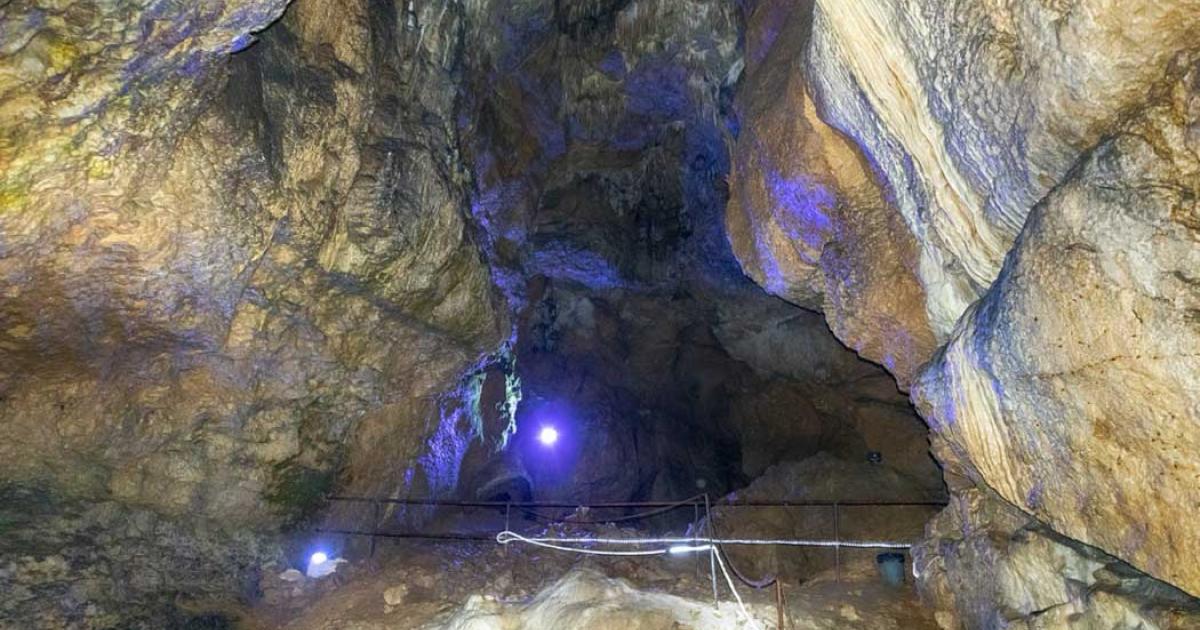
Contested Yet Fascinating Bones Found in the Bacho Kiro Caves
In the past, we were drawn to caves, viewing them as sacred or mysterious places. And it would seem not much has changed, as caves still hold an enduring fascination for humans. One of the most remarkable cave systems in eastern Europe is the Bacho Kiro Cave in Bulgaria. This spectacular series of tunnels and shafts have amazed members of the public for over a century and Bacho Kiro is among the most important tourist sites in Bulgaria.
The Making of Bacho Kiro Cave System
Bacho Kiro Cave is a karst cave, formed from limestone and out of the remains of marine creatures such as coral when this part of Europe was under a primeval sea. It was created over a period of millions of years by erosion of an underground river.

Natural waterfall near the Bacho Kiro caves and Dryanovo Monastery. (todor/Adobe Stock)
The cave system is located in a river valley that has been an important migratory and trade route since prehistory. Archaeologists have found fragments of a human jaw of uncertain typology and concluded that early hominids in Europe inhabited the caves. There is a dispute as to whether the bones came from a Homo erectus or a Neanderthal, but either way it is believed that they are over 43,000 years old. Two animal teeth that had been polished and pierced were found at Bacho Kiro and these are considered to be the oldest ornaments found in Europe to date. These are on display to visitors.
The Dryanovo Monastery was founded near the caves during the Second Bulgarian Empire in the 12 th century, and it is still home to a community of Orthodox monks. It has been attacked numerous times and always restored.
The cave system was first explored in the 19 th century, being opened in the 1890s, and becoming a tourist attraction in the 1930s. It was renamed in 1940 after the Bulgarian patriot Bacho Kiro.
The Underground Wonders at Bacho Kiro
The cave is located on a range of rocky hills that overlook a river valley where the Andaka and Dryanovo rivers flow. The entrance of the cave is quite low. The cave is cut into a 75 foot high (25 m) vertical limestone rock and is situated at an elevation of over 1000 feet (335 m).
Bacho Kiro is a four-story maze of tunnels, galleries, and halls. In total it is about 12,000 ft long (3600 m), with two routes of different lengths. The galleries, or chambers, were carved out by an underground river and although they soar high, they are well lit by electric light. Visitors throw coins into the cave pools for good luck. The cave system also has some outstanding dripstones and flowstones.
- God or the Devil? Whose Mystical Eyes Follow Visitors through the Bulgarian Prohodna Cave?
- Giant Face-like Rock Formations and a Rock Shrine Found in Bulgaria
- An 8-Hour Walk to Get Groceries: This Monastery is so Remote That Almost No One Has Heard About It

View of the canyons near the Dryanovo Monastery and Bacho Kiro caves. (smoke666/Adobe Stock)
The galleries are about 3900 feet (1200 m) long. The four main galleries have been given poetic names and so too have a number of rock formations. One of the galleries is known as the Throne Hall and a rectangular rock formation is known as the Sacrificial Altar. They are all illuminated.
Many extraordinary stalactites and stalagmites fill the caverns, some of which have joined over the millennia and have formed rock pillars, with the best known called Lonely Column.
Bacho Kiro is famous for its bat population. There are many to be seen in the cave and visitors can witness them in the natural habitat.
Getting to Bacho Kiro, Bulgaria
The caves are located some 3 miles (5 km) from the major Bulgarian town of Dryanovo. There is ample public transport to the area because it is a busy tourist site and a reasonably priced admittance fee is charged to enter the cave. Guided tours are also available.
Once inside, either of the two routes that can be explored by visitors. The longer one is more expensive and takes about one hour, while the shorter tour is less expensive and takes 20 minutes.

The Dryanovo Monastery, Bulgaria. (kililart/ Adobe Stock)
Bacho Kiro is located in a national park of breath-taking scenery where rock climbing is also available, and the cave is located very near the spectacular Dryanovo Monastery.
Top image: Interior of the Bacho Kiro Caves Source: todor/ Adobe Stock
By Ed Whelan
References
Bailey, G., & Galanidou, N. (2009). Caves, palimpsests and dwelling spaces: examples from the Upper Palaeolithic of south-east Europe. World archaeology, 41(2), 215-241
Available at: https://www.tandfonline.com/doi/abs/10.1080/00438240902843733
Kozlowski, J. K., & Otte, M. (2000). The formation of the Aurignacian in Europe. Journal of Anthropological research, 56(4), 513-534
Available at: https://link.springer.com/chapter/10.1007/978-3-211-49294-9_4
Reed, J. M., Kryštufek, B., & Eastwood, W. J. (2004). T he physical geography of the Balkans and nomenclature of place names. In Balkan Biodiversity (pp. 9-22). Springer, Dordrecht
Available at: https://link.springer.com/chapter/10.1007/978-1-4020-2854-0_2
















Comments
Djd
Agageb
F d d
D
D
Dmdncmald
Smdmc
Google Search, also referred to as Google Web Search or simply Google, is a web search engine developed by Google. It is the most used search engine on the World Wide Web across all platforms, with 92.62% market share as of June 2019, handling more than 5.4 billion searches each day. Wikipedia